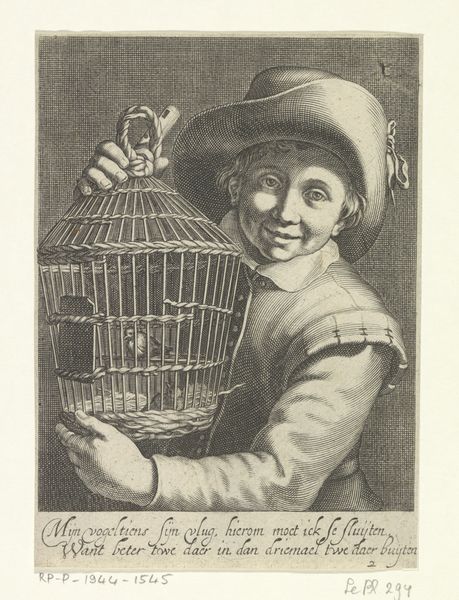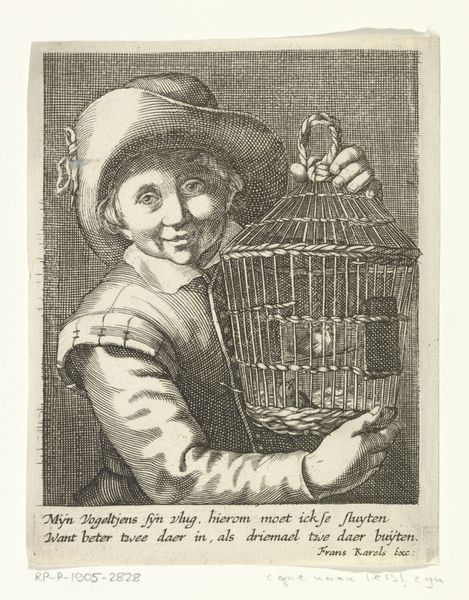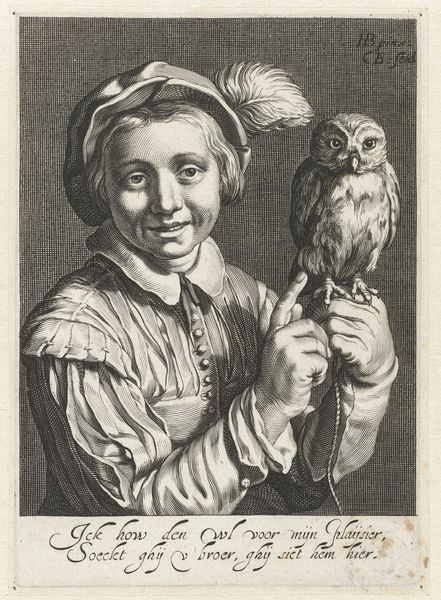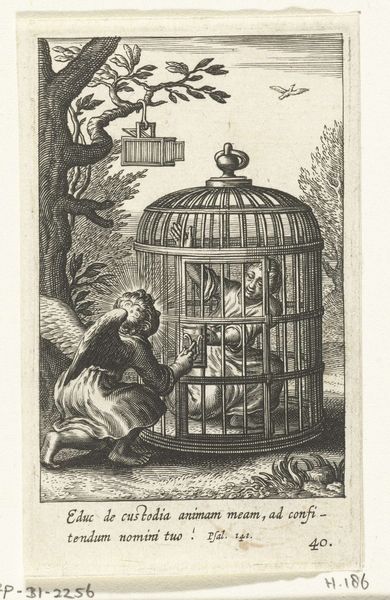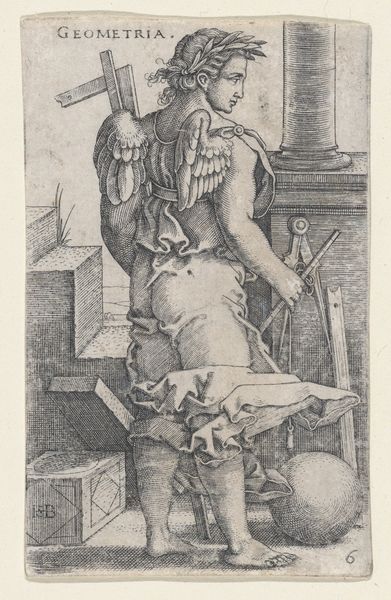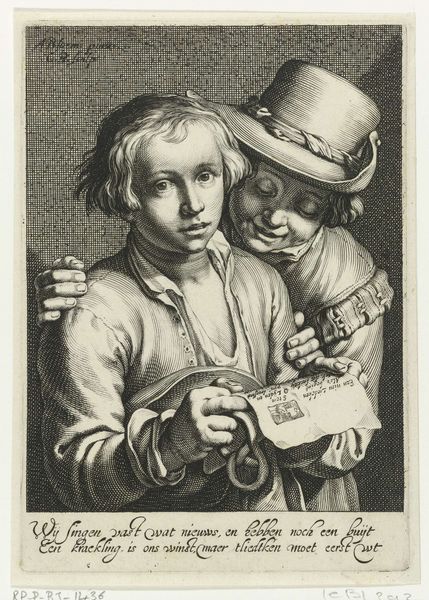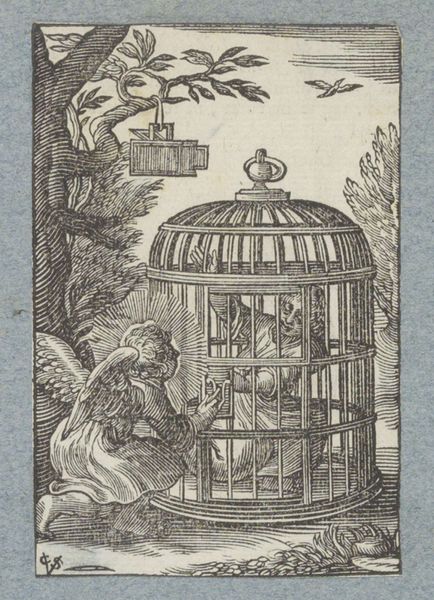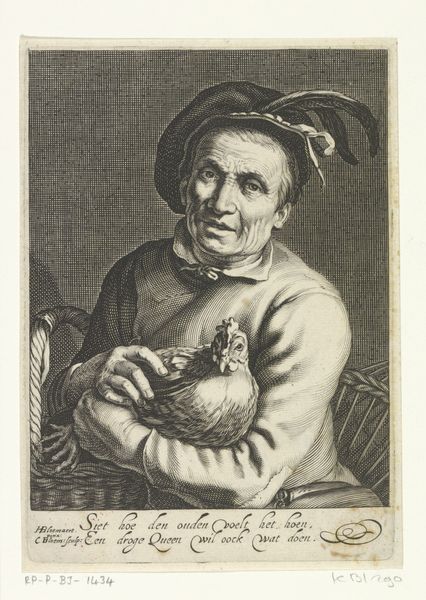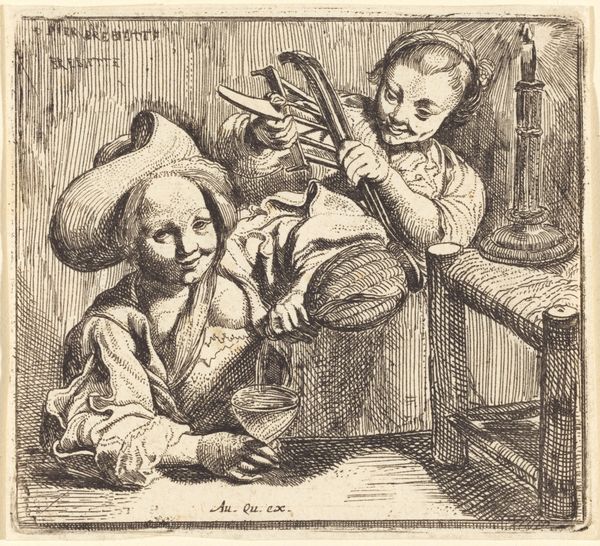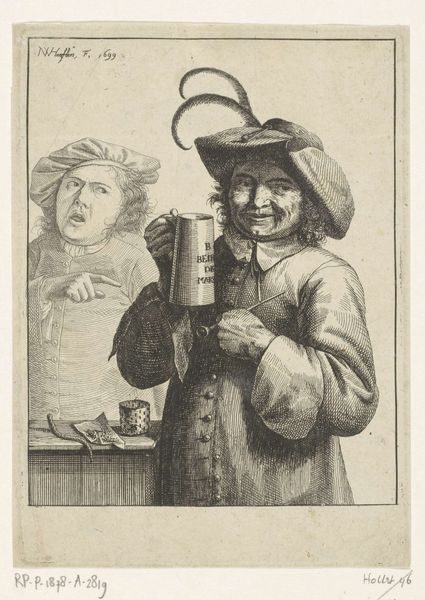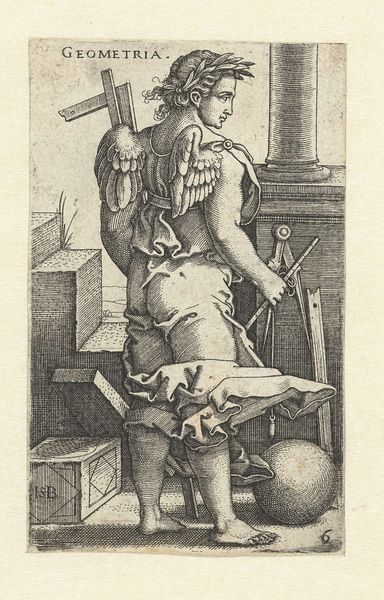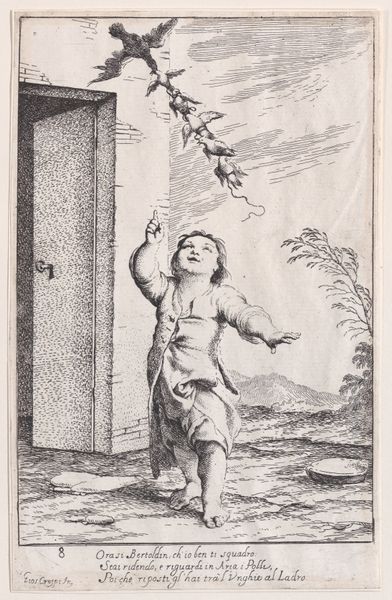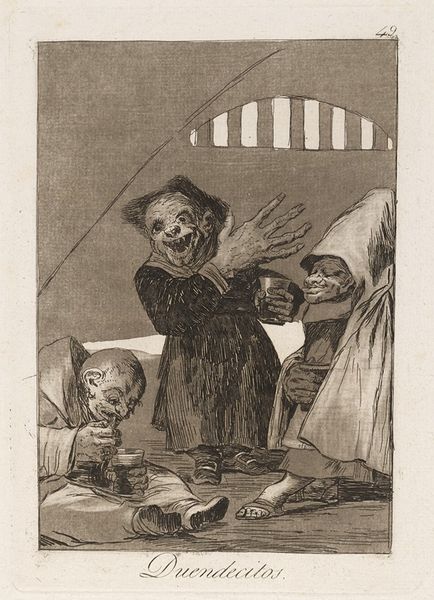
engraving
#
portrait
#
baroque
#
dutch-golden-age
#
caricature
#
old engraving style
#
traditional media
#
caricature
#
figuration
#
line
#
portrait drawing
#
genre-painting
#
engraving
Dimensions: height 167 mm, width 118 mm
Copyright: Rijks Museum: Open Domain
Curator: Well, isn't this intriguing? We're looking at an engraving called "Jongen met vogelkooi," or "Boy with Birdcage," from somewhere between 1625 and 1675, a creation attributed to the rather mysterious "Anonymous." It's part of the Rijksmuseum's collection. Editor: Oh, my! It’s…striking, in a way that makes you pause. The stark black and white is so definite, and it highlights the somewhat…peculiar facial expression of the boy. He’s got this sly, almost unsettling smile, hasn't he? And that cage dominates the image! Curator: Absolutely. What really captures me is the contrast. We see a common enough motif – the boy, the bird, suggesting themes of freedom and confinement. But contextualizing it with socio-historical interpretations is key here. Birdcages were frequently viewed as emblems of patriarchy and even the commodification of life. What happens when we reflect on its time period, one rife with shifting social constructs, economic stratification, and burgeoning colonialism? Editor: Ooh, now that's where things get interesting. So you are seeing it as a snapshot of control and ownership in 17th-century Dutch society, beyond a simple genre scene? Because, personally, I am not fully buying the malevolent symbolism...I think there might be tenderness here? I mean, look at how carefully he’s holding that cage, almost protectively. And that inscription at the bottom - "My little birds are quick, therefore I must lock them up. For it is better to have two there, than three times two there outside." It suggests...concern. Curator: Ah, but is it concern for the birds or a justification of control? Given the period's artistic and societal investment in portraying human domination over the natural world—evident not just in art, but in economic practices, and scientific exploration, the notion of innocent tenderness is hard for me to completely accept. It is very likely this boy, within his historical context, mirrors broader themes of possessing that which one desires and consolidating privilege under the guise of protective love. Editor: You always bring a perspective that's, well, gloriously thorny. And valid! I suppose it's the ambiguity that keeps me coming back. I find it’s the slight uncanniness that lets our own feelings—ours, now in this present moment—fill the gaps in meaning. That’s the magic. Curator: Indeed. Perhaps this enigmatic "Jongen met vogelkooi" serves less as a statement, but more so a complex conversation—echoing through the ages, urging us to really inspect what it means to be “held” by structures of both power and affection.
Comments
No comments
Be the first to comment and join the conversation on the ultimate creative platform.
